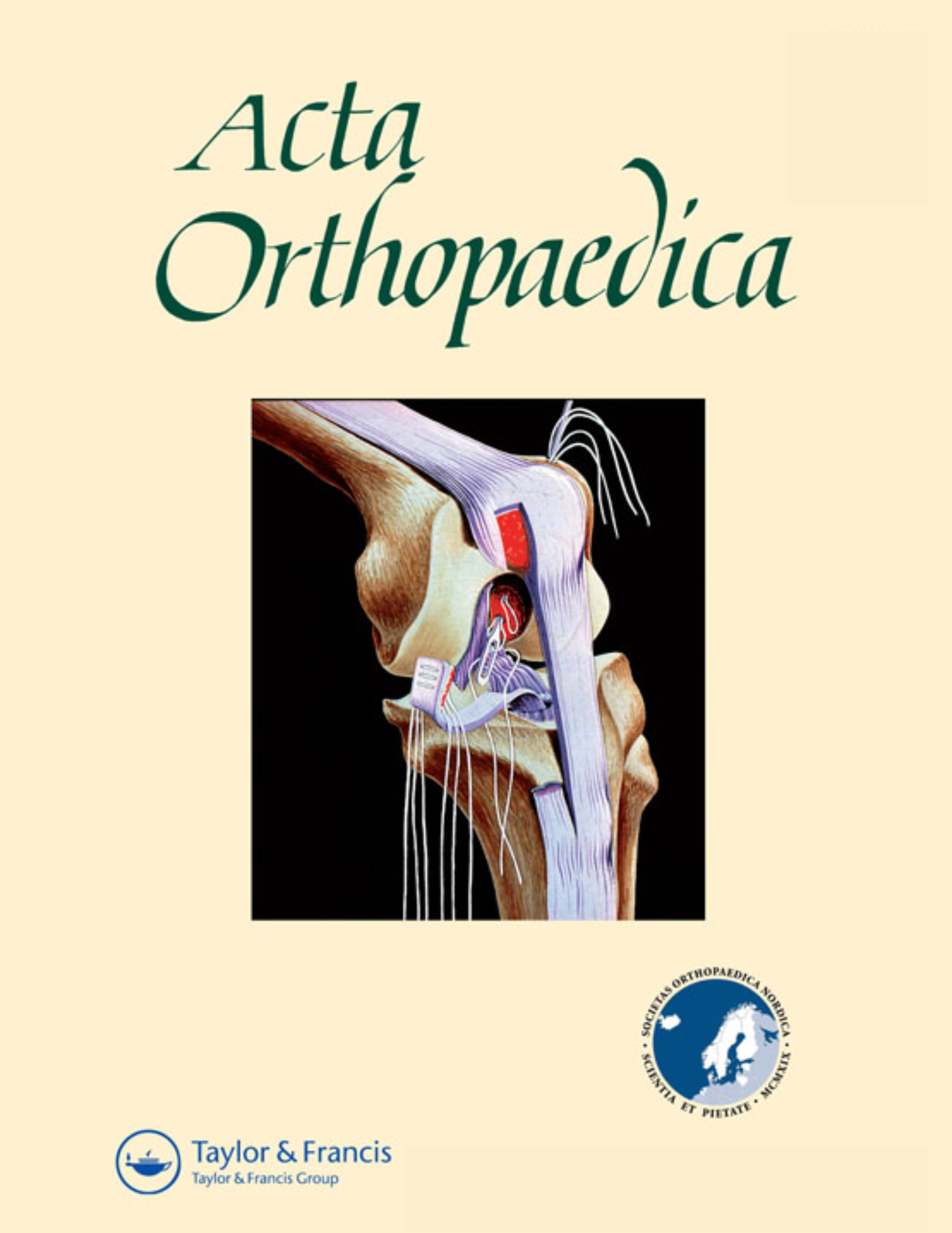
Local clondronate reduces migration of revised acetabular cups versus placebo

Local clondronate reduces migration of revised acetabular cups versus placebo
Decreased migration with locally administered bisphosphonate in cemented cup revisions using impaction bone grafting technique
Acta Orthop. 2018 Feb;89(1):17-22Synopsis
20 patients who were scheduled for isolated acetabular cup revision with impaction allografting following primary total hip arthroplasty were included and randomized to local intraoperative administration of clodronate or saline. The purpose of this study was to compare cup migration over a 24-month follow-up. Results demonstrated significantly lower cup subsidence (proximodistal translation; y-axis) in the clodronate group compared to the saline group, but no significant difference in x-axis and z-axis translation between groups. No significant difference in cup rotation in any plane was observed between groups.
Was the allocation sequence adequately generated?
Was allocation adequately concealed?
Blinding Treatment Providers: Was knowledge of the allocated interventions adequately prevented?
Blinding Outcome Assessors: Was knowledge of the allocated interventions adequately prevented?
Blinding Patients: Was knowledge of the allocated interventions adequately prevented?
Was loss to follow-up (missing outcome data) infrequent?
Are reports of the study free of suggestion of selective outcome reporting?
Were outcomes objective, patient-important and assessed in a manner to limit bias (ie. duplicate assessors, Independent assessors)?
Was the sample size sufficiently large to assure a balance of prognosis and sufficiently large number of outcome events?
Was investigator expertise/experience with both treatment and control techniques likely the same (ie.were criteria for surgeon participation/expertise provided)?
Yes = 1
Uncertain = 0.5
Not Relevant = 0
No = 0
The Reporting Criteria Assessment evaluates the transparency with which authors report the methodological and trial characteristics of the trial within the publication. The assessment is divided into five categories which are presented below.
4/4
Randomization
4/4
Outcome Measurements
4/4
Inclusion / Exclusion
4/4
Therapy Description
4/5
Statistics
Detsky AS, Naylor CD, O'Rourke K, McGeer AJ, L'Abbé KA. J Clin Epidemiol. 1992;45:255-65
The Fragility Index is a tool that aids in the interpretation of significant findings, providing a measure of strength for a result. The Fragility Index represents the number of consecutive events that need to be added to a dichotomous outcome to make the finding no longer significant. A small number represents a weaker finding and a large number represents a stronger finding.
Why was this study needed now?
Early studies have demonstrated promising results in association with bisphosphonate treatment to reduce implant migration in cases of total joint arthroplasty. In addition, there has been increasing interest in the use of local bisphosphonate to improve implant stability in cases of revision performed with adjunct allograft.
What was the principal research question?
In acetabular revision with a cemented cup and allograft, does the local application of clodronate result in significantly lower acetabular cup migration over the first 2 years of follow-up, as compared to control saline?
What were the important findings?
- Translation of the cup in the mediolateral direction (x-axis) did not significantly differ between the clodronate group and the control group at 6 weeks (p=0.2), 3 months (p=0.3), 12 months (p=0.6), or 24 months (p=0.3).
- Translation of the cup in the proximodistal direction (y-axis) was significantly lower in the clodronate group compared to the control group at 6 weeks (0.10mm [95%CI 0.00, 0.19] vs. 0.35mm [95%CI 0.16, 0.54]; p=0.01), 12 months (0.21mm [95%CI 0.06, 0.37] vs. 0.59mm [95%CI 0.23-0.94]; p=0.03), and 24 months (0.22mm [95%CI 0.07, 0.36] vs. 0.59mm [95%CI 0.27-0.91]; p=0.02).
- Translation of the cup in the anteroposterior direction (z-axis) did not significantly differ between the clodronate group and the control group at 6 weeks (p=0.2), 3 months (p=0.3), 12 months (p=0.6), or 24 months (p=0.3).
- Rotation of the cup in the x-, y, and z-axis did not significantly differ between the clodronate group and the control group at 6 weeks, 3 months, 12 months, and 24 months (all p>0.05).
- Periprosthetic areal BMD around the acetabular cup did not significantly differ between the clodronate group and the control group after 3 or 12 months.
What should I remember most?
In revision arthroplasty for an acetabular cup with impaction allografting, intraoperative treatment of the allograft with clodronate 60mg/mL demonstrated significantly reduced acetabular cup subsidence over 24-months when compared to the treatment of the allograft with control saline.
How will this affect the care of my patients?
The results of this study suggest that cup stability, particularly when considering proximodistal cup migration, may be improved with the treatment of allografts with clodronate in acetabular cup revision with impaction bone grafting. Given the small sample, further studies should be considered. Larger trials should look to continue to investigate cup stability associated with local bisphosphonate application, as well as thoroughly assess any potential adverse events with its use.
Learn about our AI Driven
High Impact Search Feature
Our AI driven High Impact metric calculates the impact an article will have by considering both the publishing journal and the content of the article itself. Built using the latest advances in natural language processing, OE High Impact predicts an article’s future number of citations better than impact factor alone.
Continue



 LOGIN
LOGIN

Join the Conversation
Please Login or Join to leave comments.